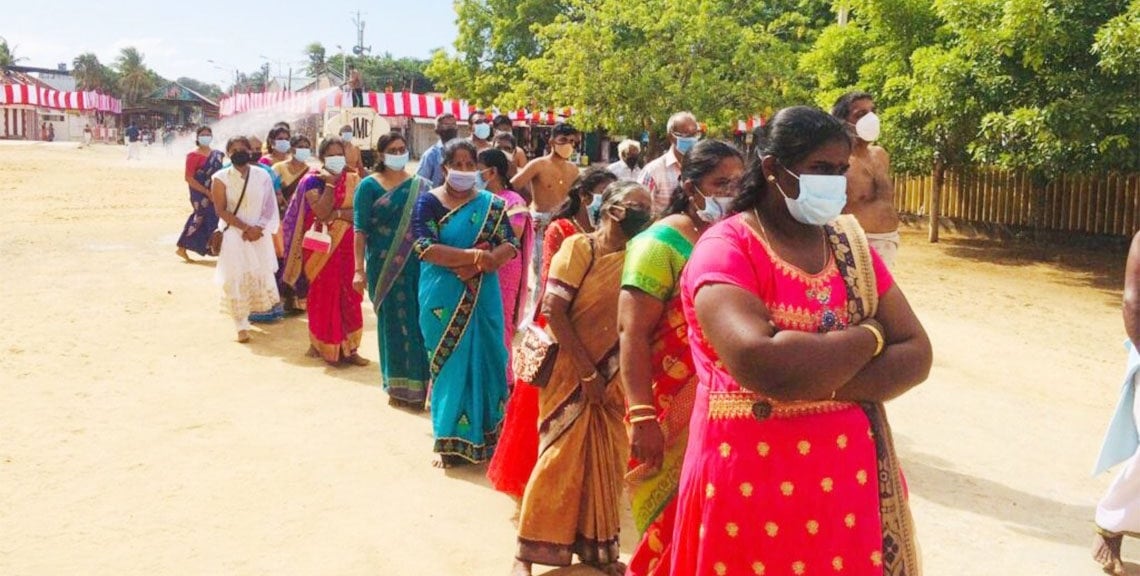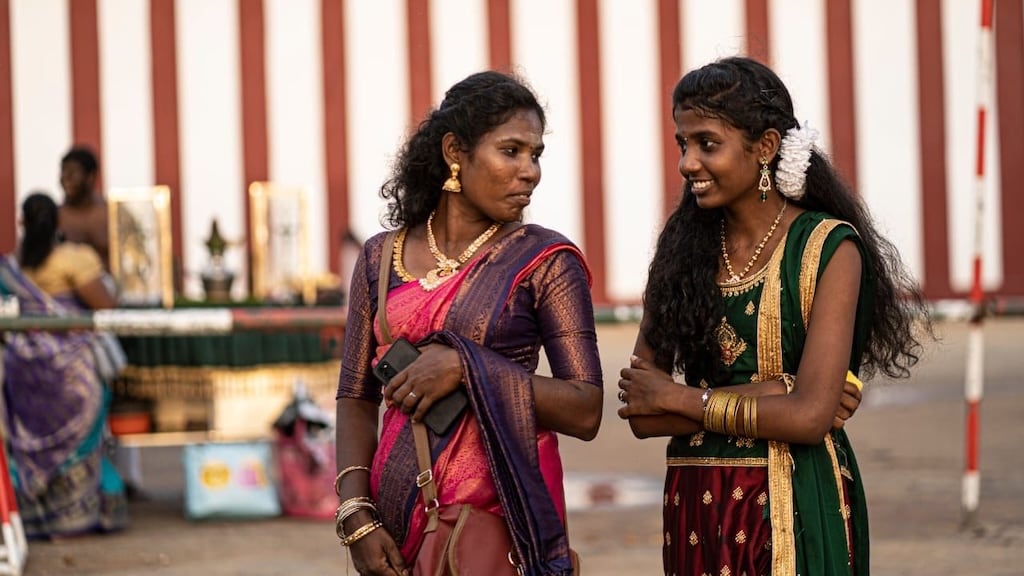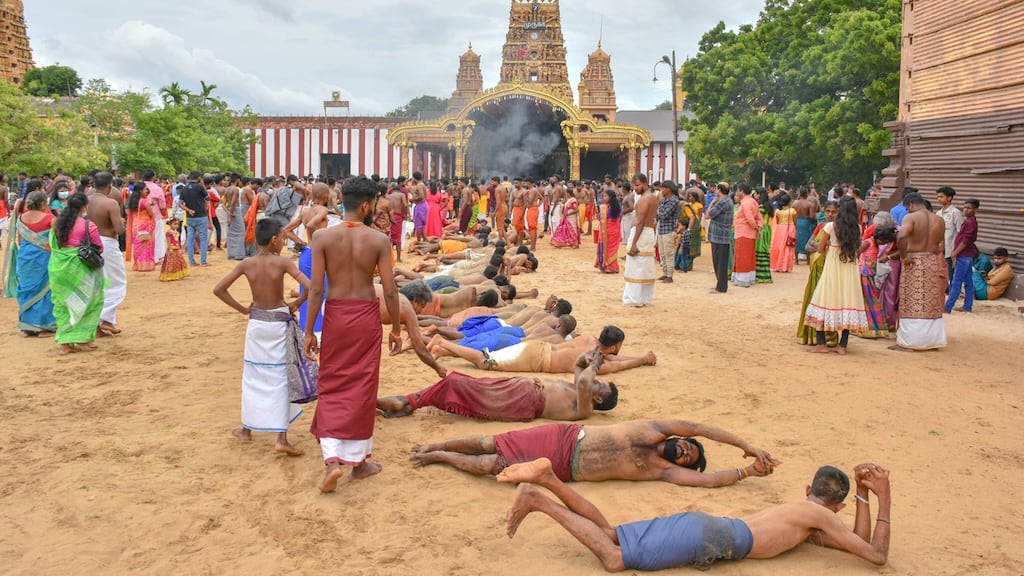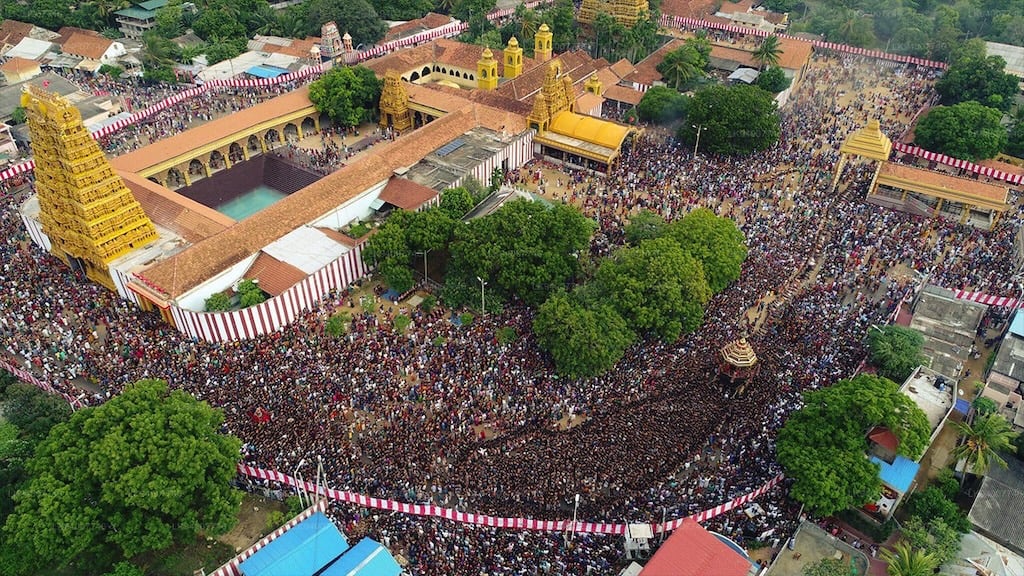Nallur Festival in Sri Lanka: A Sacred Tapestry of Devotion and Culture
The Nallur Festival in Jaffna is one of Sri Lanka's most significant Hindu celebrations. Held annually at the revered Nallur Kandaswamy Kovil, this 25-day festival draws tens of thousands of devotees and travelers, weaving together religion, history, and vibrant Tamil traditions.
It is not just a religious event but a living embodiment of resilience and cultural identity in northern Sri Lanka.


Historical Background
The origins of the Nallur Festival trace back to the 15th century, when the original Nallur Kandaswamy Temple was established under the reign of King Parakramabahu VI. Over centuries, the temple and its festival became a focal point of Tamil Hindu life in the Jaffna Peninsula.
Despite historical challenges, including colonial rule and conflict, the festival persisted, symbolizing the unbroken spiritual continuity of the community. Today, it stands as a reminder of cultural endurance and devotion to Lord Murugan, the warrior deity worshipped at the temple.
Typical Activities
The festival unfolds in a carefully choreographed sequence of rituals and processions. Each day features distinct ceremonies, beginning with flag-hoisting and culminating in majestic chariot parades. Gigantic temple chariots, intricately carved and adorned with flowers and lights, are pulled through the streets by devotees chanting hymns.
Traditional Tamil drummers and musicians set a rhythmic backdrop, while men and women carry offerings, milk pots, and kavadi (ornate wooden or metal structures carried on shoulders) as acts of penance and devotion. The climax arrives with the Ther Thiruvila, the grand chariot procession, which attracts the largest crowds.
Traditional Customs
Traditional customs in Sri Lanka's northern Tamil culture come alive during the Nallur Festival. Devotees fast, abstain from meat and alcohol, and wear simple white or saffron attire as signs of purity. Women often dress in vibrant saris, while men go bare-chested with white veshtis, reflecting humility before the deity.
Rituals such as piercing the skin or tongue with small spears (vel) symbolize devotion to Lord Murugan. Food stalls around the temple serve vegetarian Tamil delicacies, including dosai, idli, and sweet pongal, creating a culinary experience rooted in tradition. Music, bhajans (devotional songs), and the chanting of Tamil scriptures further immerse participants in spiritual fervor.
What to Expect
Visitors to the Nallur Festival can expect a deeply spiritual yet welcoming atmosphere. The best time to attend is mid-August, when the chariot processions take place. Weather in Jaffna is typically hot and humid, so light cotton clothing is advisable.
Photography is allowed in public areas but should be done respectfully, avoiding intrusion during sacred rituals. Accessibility is good, with public buses, trains, and domestic flights connecting Jaffna to Colombo. Accommodations range from budget guesthouses to boutique hotels, many located near the temple.
Beyond the festival, travelers can explore Jaffna's colonial forts, serene beaches, and local markets that showcase Tamil crafts and spices. Insider tip: arrive early in the day to secure a good vantage point for processions, as crowds can be overwhelming.


Conclusion
The Nallur Festival in Sri Lanka is more than a religious celebration; it is a vibrant affirmation of Tamil Hindu culture and community spirit.
Whether you are a pilgrim seeking blessings or a traveler drawn to cultural richness, the festival offers an unforgettable immersion into Sri Lanka's northern heritage. To plan your visit, explore the Sri Lanka Tourism official site.